Once your dog has mastered basic commands, are you ready to elevate their training by teaching some fun tricks? Advanced skills not only boost your dog’s learning ability and keep them active but also improve their social interactions and in-home obedience—all while strengthening the bond you share. Even if you already have a goal in mind, figuring out where to start training new tricks can be challenging. Fortunately, trick training builds on the basic principles you already know. Follow this easy, step-by-step guide to expand your dog’s repertoire of tricks.

How to Teach Your Dog Tricks in 7 Simple Steps
1. Establish Basic Obedience
Before diving into trick training, ensure your dog is well-versed in basic commands like “sit,” “down,” and “stay.” These foundational skills set the stage for learning more complex tricks such as shaking hands, rolling over, or playing dead. When your dog reliably performs these commands, you can build on them to introduce new actions.
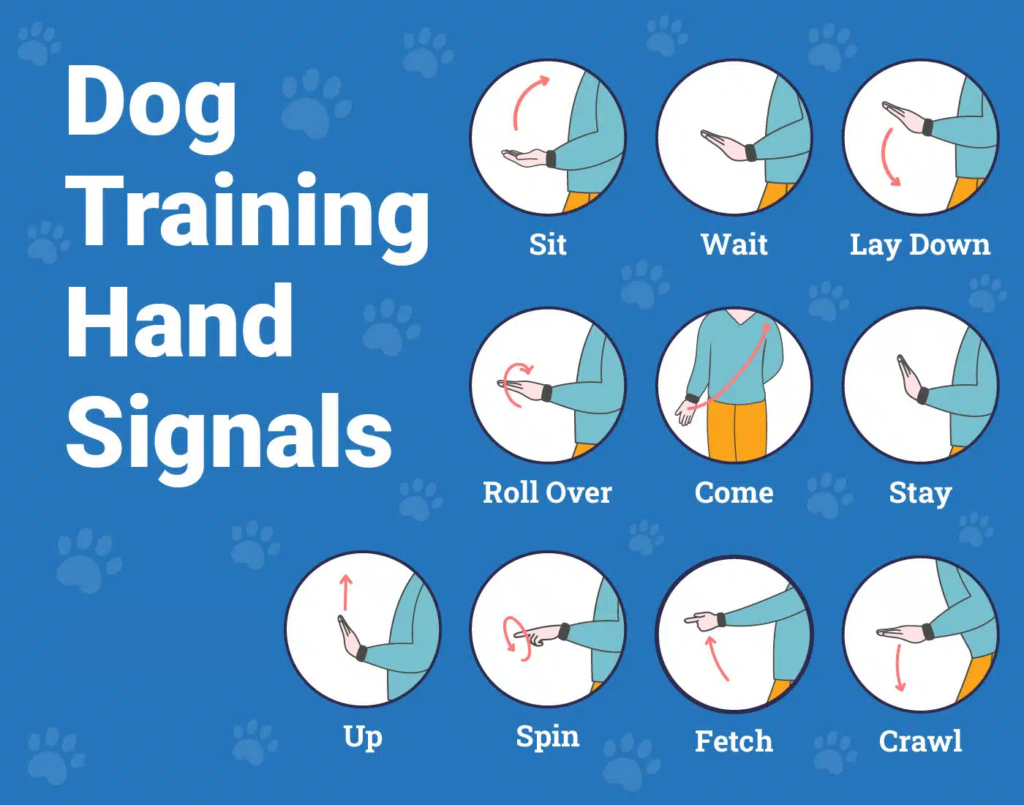
2. Lure Your Dog with Treats
Using treats as a lure is one of the most straightforward methods to teach dog tricks. Whether you’re starting with a simple “sit” or moving on to more dynamic tricks like spinning or bowing, treats can guide your dog into the desired position. For example:
- Spinning: Hold a treat near your dog’s nose and slowly move it around their body from the head toward the tail, encouraging them to follow the treat in a tight circle.
- Rolling Over: With your dog lying down, place a treat near their nose and slowly move it over their shoulder and across their back, prompting them to roll.
- Paw Shake: Have your dog sit and hold a treat in your closed fist. Once your dog paws at your hand, reward them. You can then gradually extend the time they keep their paw on your hand before giving the treat.
- Playing Dead: With your dog lying down, use a treat lure similar to the roll-over technique. Once your dog reaches a “dead” position, reward them immediately.
3. Mark the Desired Behavior
For your dog to understand what you’re asking, the desired behavior must be clearly marked. Use a consistent verbal marker like “yes” or click a clicker at the exact moment your dog performs the trick correctly. This positive reinforcement signals to your dog that they have done something right and encourages them to repeat the behavior.
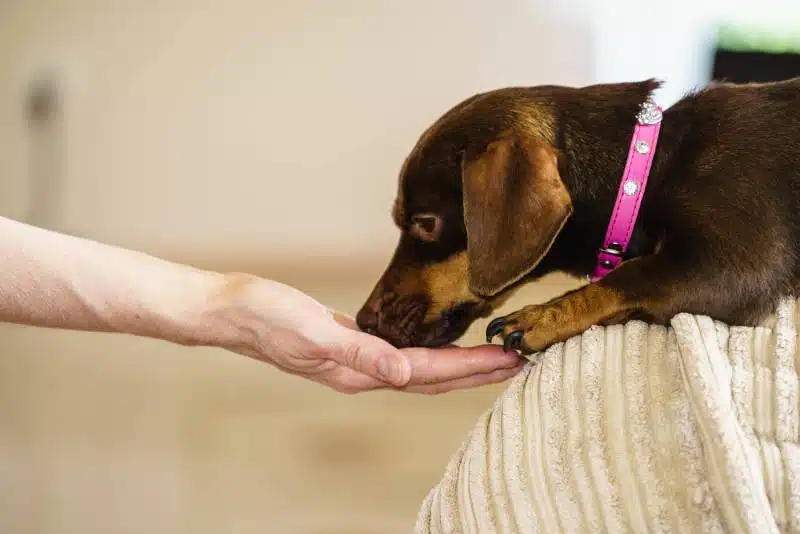
4. Repeat the Behavior and Extend the Reward
Practice the trick repeatedly until your dog masters it. For some tricks, you may need to shape the behavior in steps. For example, when teaching a handshake, reward your dog initially for simply pawing at your hand. Gradually, ask them to hold their paw on your hand for a few seconds before giving the treat. This step-by-step approach helps your dog understand what is expected of them.
5. Add Verbal Cues
Once your dog begins associating the trick with the action, introduce a verbal cue. Some trainers add the verbal cue right away, while others wait until the dog reliably performs the action using visual lures alone. For more complex tricks, delaying the verbal cue can help your dog better connect the cue to the completed behavior. When ready, give the verbal command before or along with the visual cue, and always reward and praise your dog for a job well done.
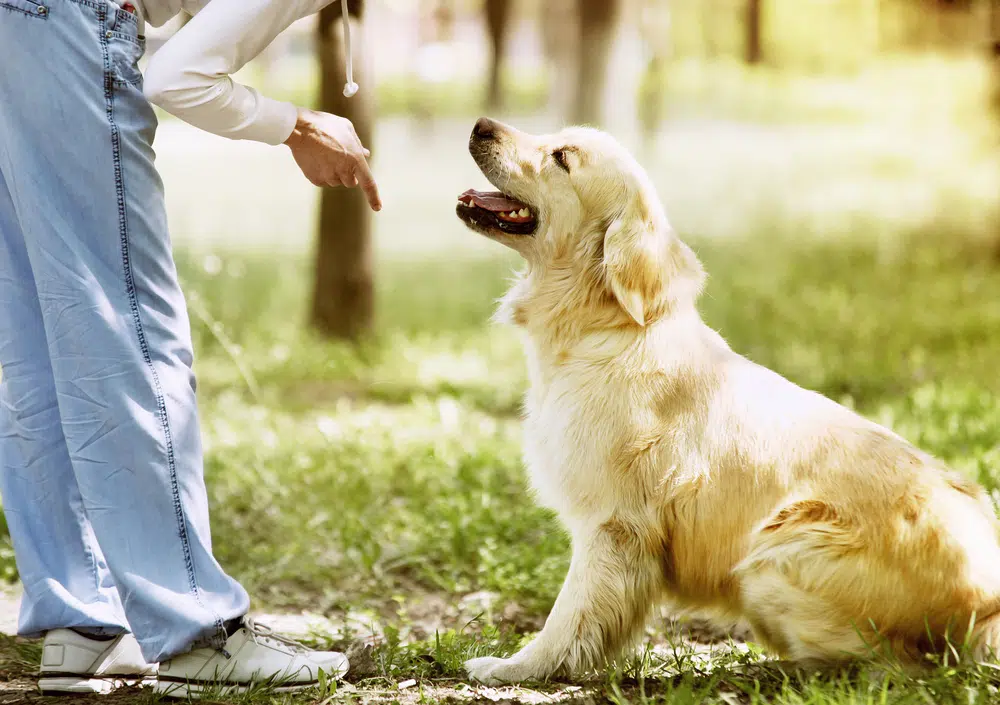
6. Remove the Lure
After your dog can perform the trick on command with the help of visual cues, gradually remove the lure. Your goal is for your dog to respond to the verbal cue alone. Continue to reward and praise to reinforce the behavior, making it clear that the command results in a reward. This transition from lure to command is essential for solidifying the trick in various environments, even in distracting situations.
7. Incorporate Various Reinforcers
Once your dog has mastered a trick, keep their mind sharp by introducing different forms of positive reinforcement. Mixing up rewards—treats, praise, or a favorite toy—can make training sessions more engaging and help maintain your dog’s enthusiasm for learning new tricks. This variety not only enriches their training experience but also reinforces the behavior more effectively.
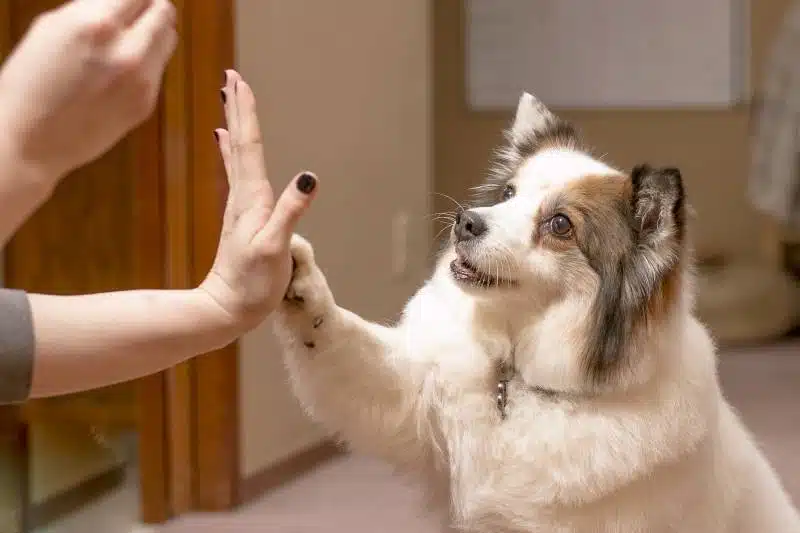
Capturing and Shaping: Advanced Training Techniques
Capture
Capturing involves waiting for your dog to naturally perform a behavior and then rewarding them for it. Observe your dog throughout the day for moments when they perform actions like bowing, yawning, or stretching. When they exhibit a desirable behavior, immediately mark it with a click or a verbal cue, and reward them. Over time, your dog will associate these natural behaviors with positive outcomes and be more likely to repeat them on command.
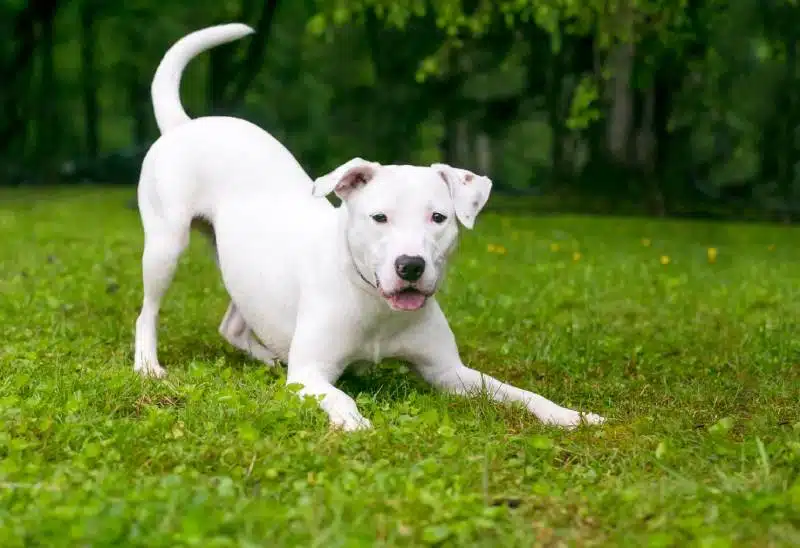
Shaping
Shaping is a gradual process of building a behavior step by step until your dog can perform the complete trick without lures. For example, if you want to teach your dog to go to a designated “place,” start by rewarding them simply for looking at the mat. Gradually, reward them for moving closer, then for placing one paw on the mat, and finally for stepping fully onto it. Shaping helps your dog learn the desired behavior incrementally, leading to greater success and understanding.

Conclusion
Teaching your dog tricks may be both fun and quirky, but the hidden benefits and lasting impact are well worth the effort. Training builds a stronger bond with your pet, increases their confidence, and teaches them the value of patience and obedience. By following this step-by-step guide, you can effectively train your dog to perform a variety of unique tricks, transforming you into an even more effective and confident trainer.
See Also:
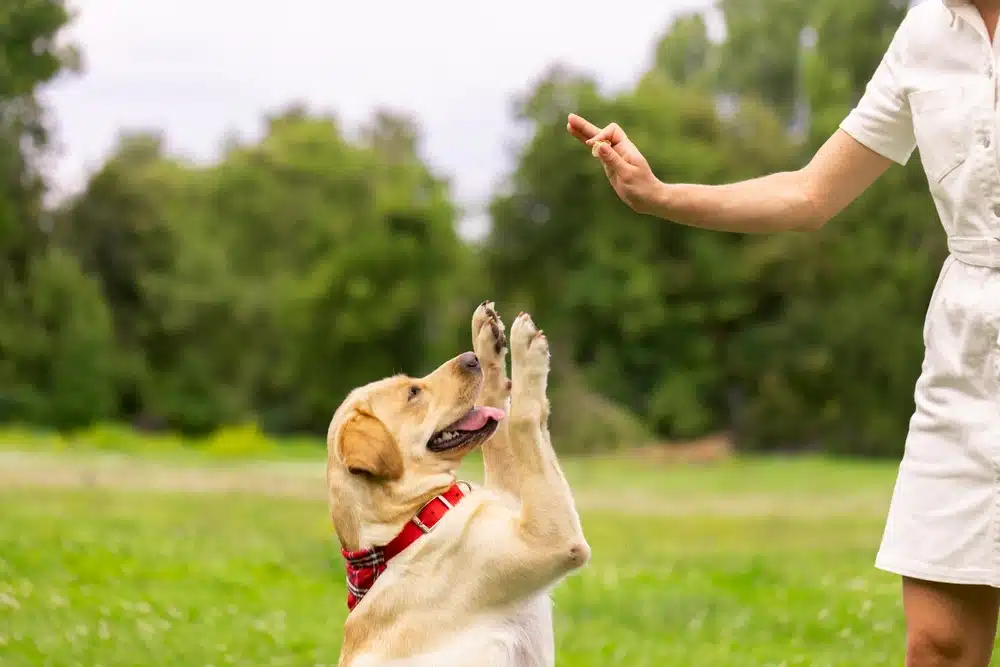

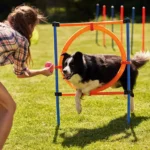
Pingback: 4 Effective Dog Training Rituals to Build Good Habits - Happy Paws Spot
Pingback: How to Train a Dog That Doesn’t Like Treats: A No-Treat Reward Training Guide - Happy Paws Spot